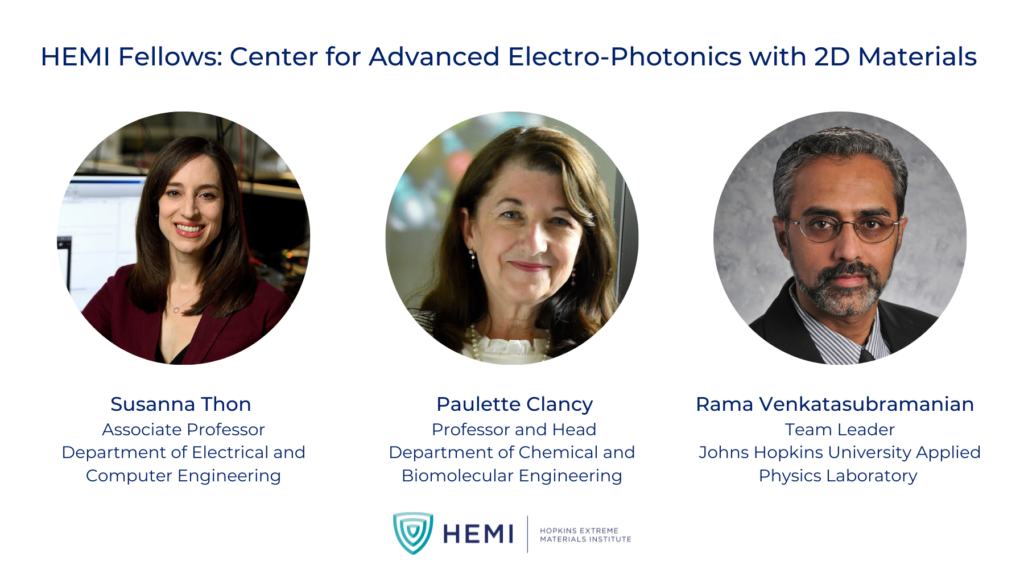Sep 16, 2021 | No Comments | By Michelle Pagano
HEMI Fellows Susanna Thon, associate professor in the Department of Electrical and Computer Engineering, Paulette Clancy, professor and head of the Department of Chemical and Biomolecular Engineering, and Rama Venkatasubramanian, team leader in Energy and Thermal Management at the Johns Hopkins University Applied Physics Laboratory, have collaborated with researchers at Morgan State University in an initiative designed to not only advance materials research but also to establish the first center of its kind at any Historically Black College or University.
Ramesh C. Budhani, professor of physics at Morgan State, has recently been awarded a $7.5 million grant from the U.S. Department of Defense (DoD) to found the Center for Advanced Electro-Photonics with 2D Materials. Thon and Clancy serve as co-PIs on the grant. Other key contributors to the project include Venkatasubramanian and David Shrekenhamer from the JHU Applied Physics Laboratory.
“Johns Hopkins is pleased to be a partner with Morgan State on this initiative. By furthering the relationship between our institutions via the Center for Advanced Electro-Photonics with 2D Materials, we are creating pathways of success for students while increasing our research capacity in the area of next-generation materials for a variety of applications,” said Thon. “We are especially excited about the potential to attract top-notch talent to Baltimore by combining the strengths of our two schools.”
Fundamental to the Center’s research operations will be its mission to train underrepresented diverse students by expanding talent pipelines within the technology workforce and defense sector. The exposure of students to specific technologies, and their accumulated experience attained at the newly created center, will increase proficiencies and marketability within private and public sector industries. The cornerstone of the applied experience made available through the Center’s research will be summer internships for both Morgan and JHU students, co-advising of PhD dissertations, and joint annual workshops. Additional funding from the grant will underwrite internships for 10 to 15 undergraduate students and five students from area high schools and community colleges.
“Through the establishment of this center, STEM students have a space to perform cutting-edge research on an emergent class of quantum materials and technologies for clean energy, electromagnetic sensing and information processing,” says Clancy. “They also have the opportunity to create lasting relationships with researchers outside of their home institution. The impact this center will have on the workforce within the materials research community will be significant.”
The DoD funding will provide vital resources in the realm of scientific research rooted in thin films and nanostructures of refractory metal dichalcogenides and layered materials of a semiconductor and thermoelectric material called bismuth telluride, which is often used as a topological insulator. These layered materials will be synthesized at Morgan. Subsequent highly critical stability calculations and growth kinetics modeling of the 2D materials, along with experimental device development, will be performed by JHU and APL researchers.




